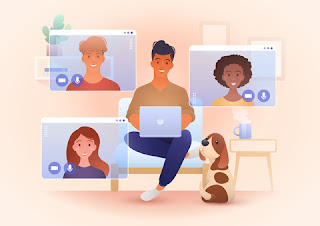Fostering prosocial, positive connections is critically important for our well-being. It's a skill that we as humans develop over time. Starting as children, we meet, navigate experiences together, form relationships and participate in our communities. Right now, young people are missing out on chances to do that.
As youth workers, we can create opportunities for youth to build relationships. But we must be intentional and thoughtful in how we build them into our programming. As we journey through new ways of being, pivot to online learning and innovate our programs, we must continue to hold the importance of relationships in high regard.
Building understanding and skill in disciplines like science, where I primarily work, involves teaching individuals. It also involves cultivating their connections with others they can turn to with questions or to grow their interest. Historically, individual skills building has been our focus in youth programs. Community building has happened naturally as an informal part of our programming or as we go about our learning or our lives. But informal community-building activities are closed down as we physically distance ourselves.
In these exceptional circumstances, we must embrace the opportunity to design online learning so that youth can cultivate connections and build relationships. It won't be the same, and it will require more time. But trust, respect and responsibility are key to cultivating relationships in virtual environments.
Here are tips for designing programs to foster friendships and community building:
- Before young people can build community, they must first feel that they belong. My colleague, Karyn Santl, has blogged about this. She offers a framework for the design and some great strategies to get started. High-quality relationships are essential for growth, learning and thriving.
- Follow good principles of program design. Use icebreakers and cooperative games in online meetings to build comfort and communication. Find activities that draw connections through shared experiences.
- Often, the time in online learning is limited. How you show up as a facilitator of the experience matters for participants. Do you respond to their needs and adjust? Are youth engaging with you and each other? For example, in 4-H Water Watchers, a natural science series, we sensed that youth craved something new, so we started inviting guest speakers for each meeting.
- When a learning environment feels safe, learning can happen. Spend time co-creating group norms for the virtual space together with your participants. Be flexible and observe. Are youth responding only through chat or are they using their microphones? Try break-out rooms for smaller group discussions.
The longer we need to physically distance, the more important it will be for us to make space in our programming for cultivating community. We must co-create with youth a new way of being to establish stronger social connections in virtual spaces.
In retrospect, it seems we have been minimizing the time it takes and the importance of strengthening community within our programming. Relationship building happened in the unstructured time. But unstructured time -- in our programs, sports, school, etc. -- is gone. We need to lower the priority of the learning goals, and focus on relationship goals. It’s what we’re all missing right now.
So how do we design programs that foster a deeper sense of connection as well as establishing a sense of community in online environments? Are you doing this? What strategies have succeeded?

So important, and so challenging. This is on my mind a lot as fall is looming. Not only with my own children but the youth we serve. Helping them thrive looks a lot different given the current landscape.
ReplyDeleteThank you for commenting, Danielle. I completely agree with you. As you identify effective strategies for either your own children, or in programming, please share. It's as important we learn with each other.
DeleteThanks for this blog, Becky. This has been a challenge so many of us in the youth development field are facing now. I certainly learned the importance of icebreakers and have made more time for them. I also find that many youth do not want to turn their cameras on. That was a dilemma for the youth workers. If the young people did not feel safe with the camera on, they did not want to obligate it. Yet, on the other hand, if youth were using it to shield deeper connections in this new virtual space, we wanted to discourage "hiding". I thought the youth workers were pretty smart about this one. At the end of one program session they told the youth participants that at the following session we'd be taking a group photo. Youth had time to consider this and were not asked to abruptly reveal themselves. The next day, the majority of the youth showed their smiling faces and then many were able to keep that camera on the remainder of the program time. Thanks to taking the time to share. I'd love to hear from you and others further strategies on helping youth feel safe and engaged.
ReplyDeleteI appreciate your focus on this topic and the specific examples you provided to guide the discussion. I agree that the relationship building and creating a sense of belonging in programming opportunities for youth as you point out, is more important than ever. We hold up belonging as a fundamental goal of the 4-H program, but sometimes miss the mark.
ReplyDeleteYour spot on when you mentioned needing to lower the priority of learning goals and increase a focus on relationship goals. I thing there is a definite need to teach educators how to do this. I would love to see professional development opportunities for those of us who work primarily in programming and have had to "pivot" our approaches from providing quality learning opportunities in person to online for youth.